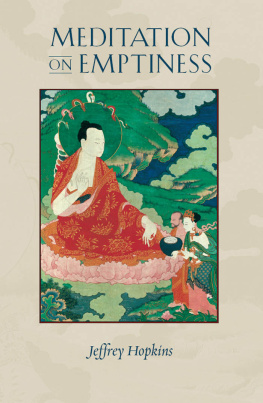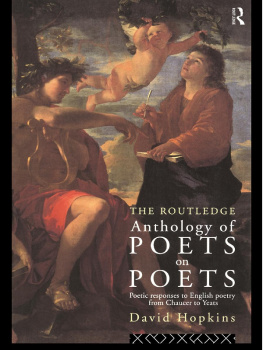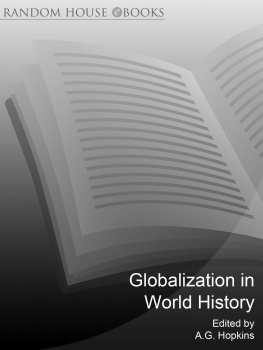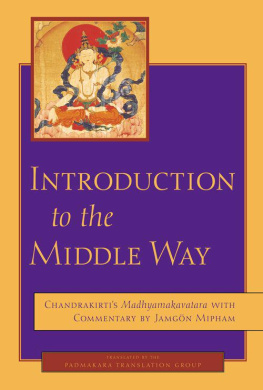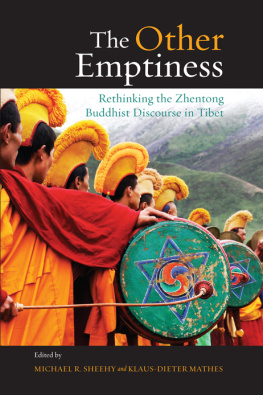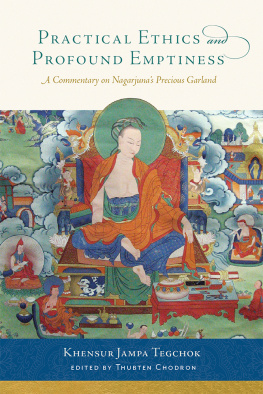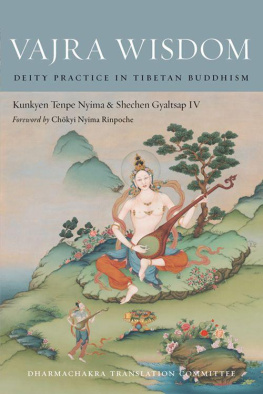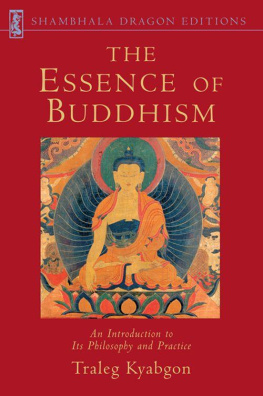M EDITATION ON E MPTINESS
Also by Jeffrey Hopkins
Emptiness Yoga
The Tantric Distinction
Tibetan Arts of Love
The Dalai Lama at Harvard with the Dalai Lama
Deity Yoga with the Dalai Lama
The Klachakra Tantra: Rite of Initiation for the Stage of Generation with the Dalai Lama
Kindness, Clarity, and Insight with the Dalai Lama
The Meaning of Life From a Buddhist Perspective with the Dalai Lama
Tantra in Tibet with the Dalai Lama
The Buddhism of Tibet and the Key to the Middle Way with Lati Rimpoche
Compassion in Tibetan Buddhism with Kensur Ngawang Lekden
Cutting Through Appearances with Geshe Lhundup Sopa
Death, Intermediate State, and Rebirth in Tibetan Buddhism with Lati Rinbochay
Fluent Tibetan: A Proficiency Oriented Learning System, Novice and Intermediate Levels with William Magee and Elizabeth Napper
Health Through Balance: An Introduction to Tibetan Medicine with Dr. Yeshi Donden
Meditative States in Tibetan Buddhism with Lati Rinbochay, Loch Rinbochay, and Leah Zahler
The Precious Garland and the Song of the Four Mindfulnesses with Lati Rimpoche
Tantric Practice in Nyingma with Khetsun Sangpo Rinbochay
Walking Through Walls: A Tibetan Presentation of Calming Meditation with Geshe Gedn Lodr

Wisdom Publications
199 Elm Street
Somerville, MA 02144 USA
www.wisdompubs.org
First published in 1983.
This revised edition, 1996.
Jeffrey Hopkins 1983, 1996.
All rights reserved.
No part of this book may be reproduced in any form or by any means, electronic or mechanical, including photography, recording, or by any information storage and retrieval system or technologies now known or later developed, without permission in writing from the publisher.
Library of Congress Cataloging-in-Publication Data
Hopkins, Jeffrey
Meditation on Emptiness / Jeffrey Hopkins; assistant editor, Elizabeth Napper.Rev. ed.
p. cm.
Includes bibliographical references and index.
ISBN 0-86171-110-6 (alk. paper)
1. Pr sa gika. 2. Sunyata. 3. MeditationBuddhism.
BQ7477.H676 1996
294.34dc20
9525827
ISBN 978-086171-110-9
eBook ISBN 978-086171-705-7
16 15 14 13 12
10 9 8 7 6
Cover art: Nagarjuna Thangka (B67 D22), courtesy of Asian Art Museum of San Francisco, the Avery Brundage Collection.
Contents
P UBLISHER S A CKNOWLEDGMENT
The Publisher gratefully acknowledges the generous help of the Hershey Family Foundation in sponsoring the production of this book.

I n this, his major work, Jeffrey Hopkins, one of the worlds foremost scholar-practitioners of Tibetan Buddhism, offers a clear exposition of the Prsagika-Madhyamaka view of emptiness as presented in the Ge-luk-ba tradition of Tibetan Buddhism. In bringing this remarkable and complex philosophy to life, he describes the meditational practices by which emptiness can be realized and shows throughout that, far from being merely abstract, these teachings can be vivid and utterly practical. Presented in six parts, this book is indispensable for those wishing to delve deeply into Buddhist thought.
At the time of its original publication in 1983, this book by Jeffrey Hopkins was, and arguably still is, the most important work on Tibetan Buddhist thought in a Western language. It certainly raised the study of Madhyamaka Buddhism to a new level of sophistication. Scholars may ignore this material, but only at their own peril.
Paul Williams, emeritus professor of Indian and Tibetan philosophy, University of Bristol
Meditation on Emptiness stands out as one of the great classics of the academic study of Buddhism in the West. Although it initiated an extensive literature on Tibetan Madhyamaka in North America, few subsequent works on the subject can be said to equal it in profundity and accessibility. A work of incredible breadth and depth, it still remains an invaluable source both for the specialist and the novice.
Jos Ignacio Cabezn, XIV Dalai Lama Professor of Tibetan Buddhism and Cultural Studies, University of California, Santa Barbara

JEFFREY HOPKINS is emeritus professor of religious studies at the University of Virginia, where he trained dozens of leading scholars in the field of Tibetan Buddhist studies over his long career. He was also the English language interpreter for ten years for His Holiness the Dalai Lama, and he has published over forty books about Tibetan Buddhism.
Homage to Majushr.
Emptiness is the very heart of Buddhist practice in Tibet. In tantra even the visualized gods, goddesses, channels, suns, moons, and so forth are qualified by emptiness. Without an understanding of emptiness the practice of Buddhism, be it sutra or tantra, cannot be complete.
Emptiness is explained in different ways by the four Buddhist schools of tenets: Vaibhhika, Sautrntika, Chittamtra, and Mdhyamika. The Mdhyamika view and, within the division of Mdhyamika into Svtantrika and Prsagika, the Prsagika view form the basis for the transformational psychology of tantra. Thus, this book on Prsagika-Mdhyamika is written with the intent of presenting not only what emptiness is but also how emptiness is realized in meditation, so that emptiness may become more than a concept of abstract philosophy.
Phenomena are empty of a certain mode of being called inherent existence, objective existence, or natural existence. This inherent existence is not a concept superimposed by philosophical systems but refers to our ordinary sense of the way that things existas if they concretely exist in and of themselves, covering their parts. Phenomena are the things which are empty of inherent existence, and inherent existence is that of which phenomena are empty. Emptiness or, more properly, an emptiness is a phenomenons lack of inherent existence; an emptiness is a negative or utter absence of this concrete mode of being with which we are so familiar.
Reasoning is the method used to establish that emptiness, or a lack of substantiality, is the mode of being of objects, and it also constitutes a yogis approach to direct realization of emptiness. Having precisely identified this sense of the massiveness or concreteness of objects, a yogi reflects on the impossibility of such through thoroughly familiarizing himself with one of the sets of reasonings that show this lack of natural existence to be the mode of being of an object. He gains an inferential understanding of the emptiness of one object and extends this understanding to all objects. Then gradually, through the force of greater and greater familiarity, he passes to a simultaneous, direct cognition of the emptiness of all phenomena in all world systems. He thereby begins to cleanse his mind of its tendencies to misconceive the nature of phenomena; his cognition of emptiness is like medicine for eradicating his assent to the false appearance of things as inherently existent. Finally, he eradicates even the false appearance of inherent existence to his senses, thereby removing all obstacles to knowledge of everything, and becomes omniscient. He does not eradicate existence; he eradicates only the false sense of inherent existence.
Next page
